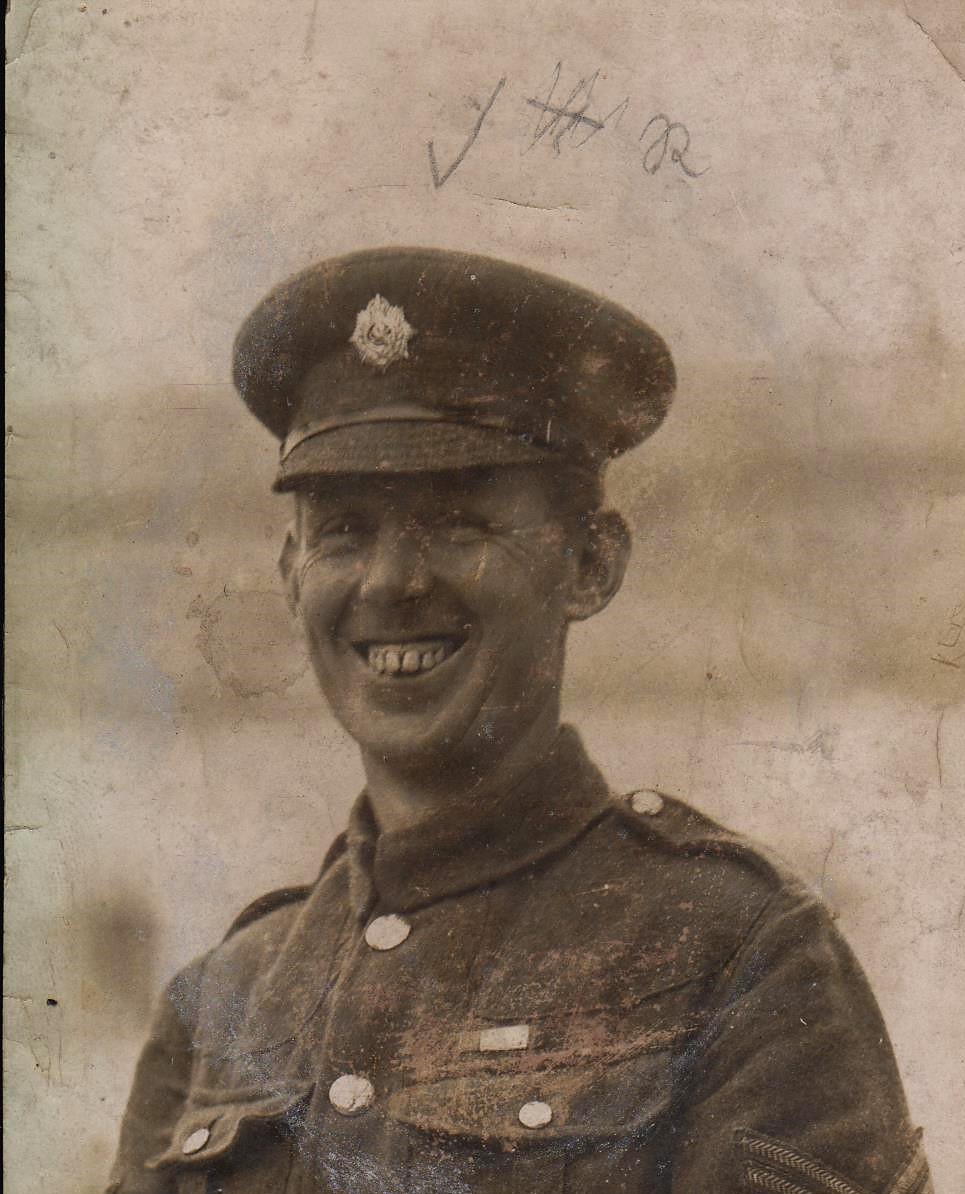
Gerald Burnett visited the museum to relate the story of his grandfather Ernest Wyatt Burnett.
My Grandfather, Ernest Wyatt Burnett was born in Chudleigh, Devonshire, in 1886. After minimal schooling and several agricultural jobs, Ernest moved to London and became a chauffeur with various employers including Thomas Tilling. He spent the pre-war years driving around Great Britain with American tourists and contemporary industrialists such as Tommy Lipton of tea fame.
Ernest enlisted with the Royal Army Service Corps, Mechanical Transport Branch, in April 1915 and became a Staff Car driver.
In 1915, the Government appointed five official Western Front War Correspondents, Philip Gibbs, Percival Phillips, H. Perry Robinson, W. Beach Thomas and Herbert Russell. Ernest was assigned to be their driver, a position he held until the end of the war.
Ernest was transferred to the Reserve in February 1919. Alongside his ‘Pip, Squeak and Wilfred’ decorations he was awarded a Silver Medal for Merit by Nicholas I, King of Montenegro.
During WW2, Ernest served with the Home Guard at Balcombe Place, his Sussex home, where he was chauffeur to Lady Gertrude Denman who was President of the Women’s Institute and Honorary Director of The Women’s Land Army.
My Grandfather was one of the lucky ones. He served his country, survived two World Wars, and lived a full and interesting life.




Explore more memories from the ribbon
-
Harold Moore
Harold Moore was born around 1898 at Mirkport near Hawes, with his twin sister Hilda. He was the second youngest of a family of ten children to Richard and Mary Moore. In 1901 they were living at Mirkpot Farm on the Hawes-Ingleton road where Richard was a farmer and stonemason. By 1914 they were living at Catriggs Farm near Hawes. Harold enlisted in Leyburn in May 1918 joining the 9th Battalion Yorkshire Regiment. He arrived in France on October 11th, just one month from the Armistice and the cessation of hostilities. As Harold joined his Battalion, it had just come out of front line action in the Premont area between St. Quentin and Cambrai. A week later on the 24th October the Battalion was involved in capturing a machine gun post in a wooded area. During this action Harold, along with a number of other casualties, was severely wounded and later died. He had been in the war just 13 days. Private Harold Moore is buried in the Premont British Cemetery SE of Cambrai. He was just 20 years old.
-
Harold Binks
Harold was born in 1894 in Well, a small hamlet to the east of Masham in North Yorkshire. He was the eldest of five children of Thomas and Elizabeth Binks. Thomas had also been born in Well, whereas Elizabeth was from Thornton Watlass near Bedale. Thomas was employed as a gamekeeper on the nearby estate of Snape Park. Harold enlisted in Leyburn in 1915 and joined the 13th Battalion Yorkshire Regiment. The Battalion mobilised and arrived in France on June 6th 1916. The Battalion went into the front line near Loos and would see action at The Battle of Ancre on the Somme. In 1917 they saw action during the German retreat to the Hindenburg Line and at the Battle of Cambrai. March 21st 1918 saw the start of the German Spring Offensive. At the action between Arras and Bapaume on the 22nd March Private Harold Binks was killed. His body was never recovered. He is commemorated on the Arras Memorial. He was 23 years of age.
-
John Mitton
John was born in October 1876, the eldest son of Warrin and Ellen Mitton of Hawes. His father Warrin was both a joiner and a farmer. John married a girl from the Leyburn area, Mary Teresa, in July 1905 and had two daughters. Before joining the Army he spent four years as a postman in Raydaleside and previous to that, for about 14 years, a rural postman at Finghall near Leyburn. It was while he was there he got married. On leaving Finghall the people on his round presented him with a marble clock, pipe and a pouch containing some money. Needless to say he was a very well liked postman! He played for Hawes football team for many years, and for two years the club secretary. He was a fine billiards player and a member of Hawes Church choir. John was described as a cheery likeable chap. John enlisted at Leyburn joining the 2nd Battalion Yorkshire Regiment and embarked for France at the end of July 1916. On April 7th 1917 the Battalion readied itself for the Arras Offensive which was due to start on the 9th. Private John Mitton was killed on that opening day. He was 40 years old. John is buried in the Neuville-Vitasse Road Cemetary, SE of Arras.
